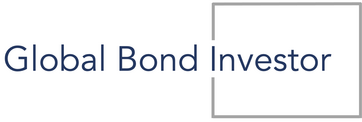Investing in the money market offers investors the opportunity to earn competitive yields with low risk and high liquidity. The money market consists of various short-term instruments, including Treasury bills, commercial paper, certificates of deposit, and money market mutual funds, each providing investors with different features, risk profiles, and investment strategies. Understanding how investors can access and invest in the money market is essential for achieving financial goals while managing liquidity, preserving capital, and optimizing returns.
Direct Investments:
- Treasury Bills (T-bills): Investors can purchase Treasury bills directly from the U.S. Department of the Treasury through auctions conducted regularly on a competitive or non-competitive basis. T-bills are available in maturities ranging from a few days to one year and are sold at a discount to their face value, with investors receiving the full face value at maturity.
- Certificates of Deposit (CDs): Investors can invest in certificates of deposit offered by banks and thrift institutions with varying terms and interest rates. CDs provide fixed returns and principal protection but require investors to lock in their funds for the duration of the CD term, which can range from a few months to several years.
- Commercial Paper (CP): Accredited investors can purchase commercial paper directly from corporate issuers through private placements or broker-dealer platforms. CP offers higher yields than Treasury securities but carries credit risk associated with the issuer’s financial strength and credit rating.
- Repurchase Agreements (Repo): Institutional investors can engage in repurchase agreements with financial institutions to lend cash in exchange for high-quality securities as collateral. Repo transactions provide short-term funding and collateralized investments with low credit risk and maturity flexibility.
Indirect Investments:
- Money Market Mutual Funds (MMMFs): Individual and institutional investors can invest in money market mutual funds, which pool assets to purchase a diversified portfolio of money market instruments. MMMFs offer professional management, diversification, and daily liquidity, making them attractive options for investors seeking convenience and flexibility.
- Exchange-Traded Funds (ETFs): Investors can access the money market through exchange-traded funds that invest in short-term fixed income securities, such as Treasury bills, commercial paper, and government securities. Money market ETFs provide intraday liquidity and transparent pricing while offering exposure to diversified money market portfolios.
- Separately Managed Accounts (SMAs): High-net-worth investors and institutions can establish separately managed accounts with asset managers to customize money market investment strategies based on specific objectives, risk tolerances, and liquidity needs. SMAs offer personalized portfolio management, reporting, and oversight, allowing investors to maintain control over their investment decisions.
- Bank Deposit Accounts: Retail investors can invest in money market deposit accounts (MMDAs) or high-yield savings accounts offered by banks and credit unions, which provide competitive interest rates and FDIC insurance coverage for deposits up to the maximum limit. MMDAs offer daily liquidity and check-writing privileges, making them suitable options for cash management and emergency savings.
Factors to Consider:
- Risk Tolerance: Investors should assess their risk tolerance, investment objectives, and time horizon when considering money market investments. While money market instruments offer lower returns than equities or longer-term bonds, they provide greater capital preservation and liquidity, making them suitable for conservative investors or short-term cash needs.
- Yield and Return: Investors should compare yields and returns offered by different money market instruments and investment vehicles to optimize portfolio income while managing risk. Higher yields may come with increased credit risk or longer maturities, so investors should weigh potential returns against associated risks.
- Credit Quality: Investors should evaluate the credit quality of money market instruments and issuers to assess default risk and ensure capital preservation. Government-backed securities, such as Treasury bills, offer the highest credit quality, while corporate commercial paper and bank CDs carry varying levels of credit risk based on issuer credit ratings and financial stability.
- Liquidity Needs: Investors should consider their liquidity needs and investment time horizon when selecting money market investments. Shorter-term instruments, such as Treasury bills or money market mutual funds, offer daily liquidity and flexibility for cash management, while longer-term CDs or private placements may require holding periods or penalties for early withdrawal.
Monitoring and Rebalancing:
- Regular Review: Investors should monitor money market investments regularly to assess performance, review market conditions, and adjust investment strategies as needed. Changes in interest rates, credit spreads, or economic indicators may warrant portfolio rebalancing or reallocation to maintain risk-return objectives.
- Reinvestment Opportunities: Investors should evaluate reinvestment opportunities as money market instruments mature or cash flows are generated. Rolling over maturing investments into new instruments or adjusting allocations based on changing market conditions can help optimize portfolio returns and liquidity management.
- Tax Considerations: Investors should consider tax implications when investing in money market instruments, as interest income may be subject to federal, state, and local taxes. Tax-exempt or tax-efficient money market investments, such as municipal bonds or tax-free money market funds, may offer advantages for investors in higher tax brackets or specific jurisdictions.
In conclusion, investors can access the money market through a variety of direct and indirect investment options, including Treasury bills, certificates of deposit, commercial paper, money market mutual funds, and exchange-traded funds. By understanding the characteristics, risks, and factors influencing money market investments, investors can construct well-diversified portfolios, optimize returns, and achieve their financial objectives while managing liquidity, preserving capital, and minimizing risk.
